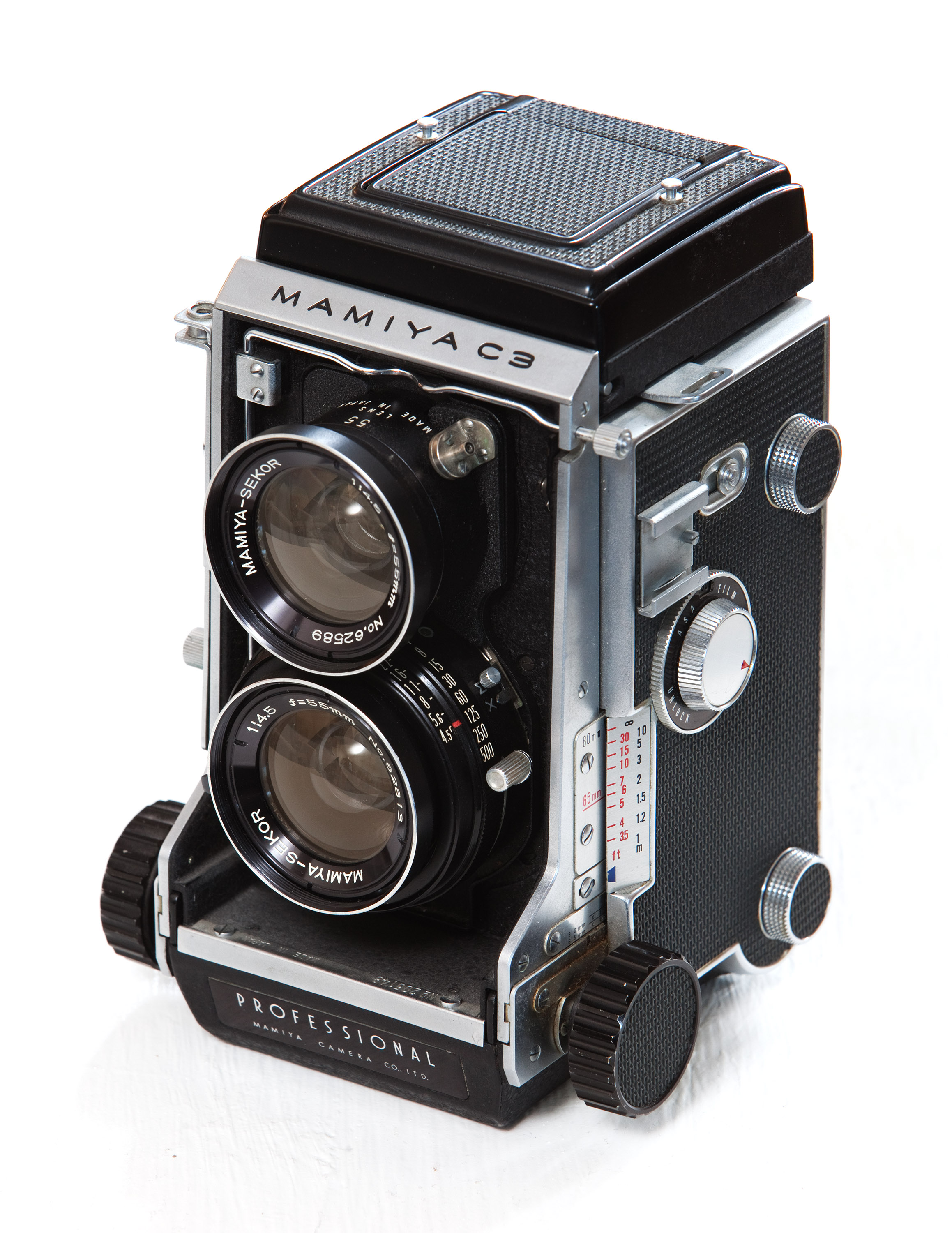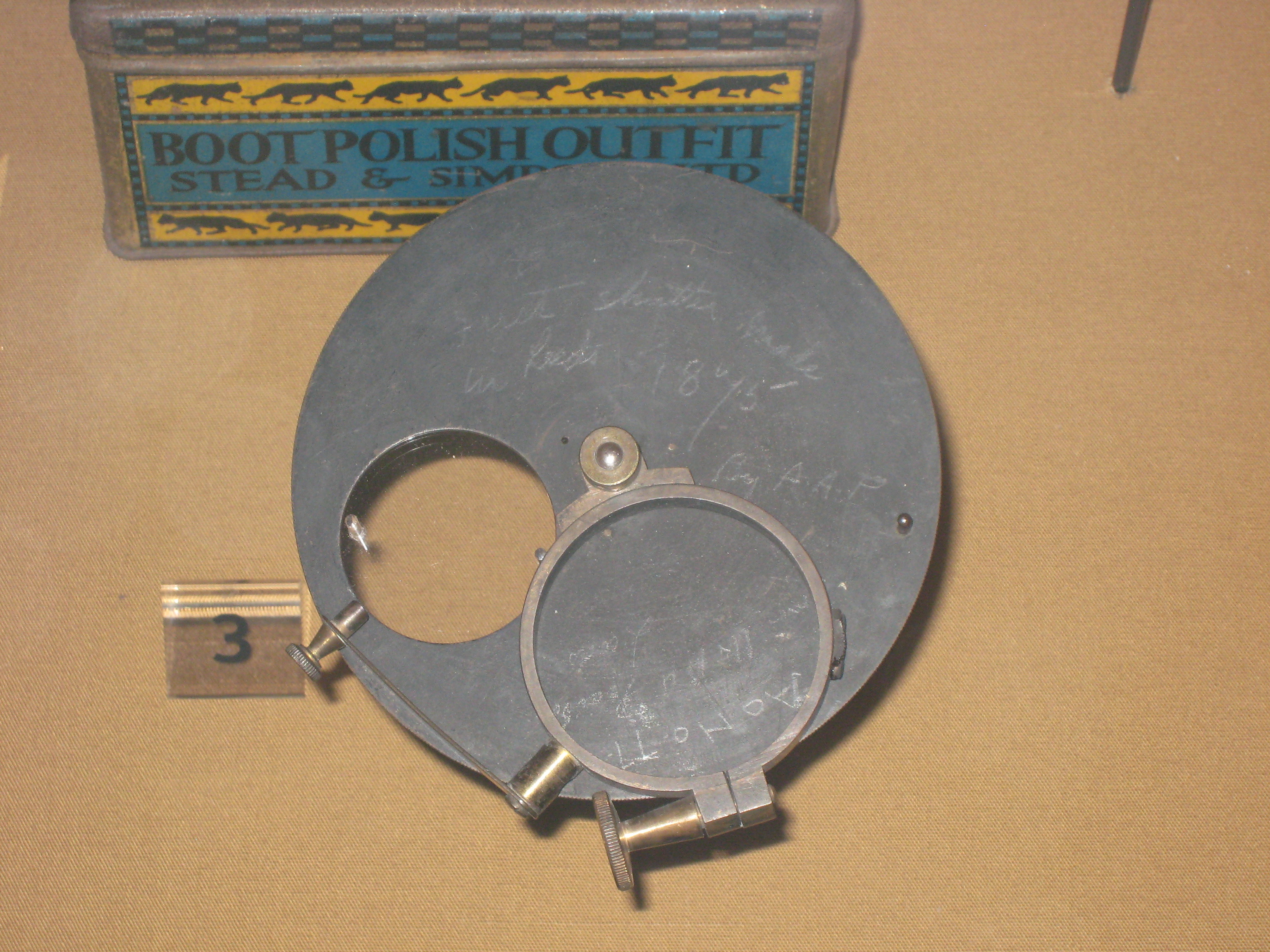|
Mamiya 6
The Mamiya 6 is a medium-format rangefinder system camera manufactured by Mamiya. It was introduced in 1989, and the line was discontinued in 1995. The coupled viewfinder windows displays frame lines appropriate to the lens mounted. The lens mount partially collapses when the camera is not in use, making it more compact. The camera has a built-in dark slide that allows the electronic leaf shutter lenses to be changed with film in the camera. It can operate in auto exposure, auto exposure lock, and manual modes. It captures twelve 6 cm × 6 cm images on 120 film rolls and 24 on 220 film. The camera also features a self-timer, hot shoe, and flash synchronization terminal. The Mamiya 6 MF was introduced in 1993. It includes an adapter that allows 6×4.5 cm formatted images to be produced. However, the number of images per roll remains the same because images are horizontally oriented. An optional panoramic adapter allows 24×54 mm images to be captured on 35 mm film. The t ... [...More Info...] [...Related Items...] OR: [Wikipedia] [Google] [Baidu] |
Medium-format
Medium format has traditionally referred to a film format in photography and the related cameras and equipment that use film. Nowadays, the term applies to film and digital cameras that record images on media larger than the used in 35 mm photography (though not including 127 sizes), but smaller than (which is considered large format photography). In digital photography, medium format refers either to cameras adapted from medium-format film photography uses or to cameras making use of sensors larger than that of a 35 mm film frame. Some of the benefits of using medium-format digital cameras include higher resolution sensors, better low-light capabilities compared to a traditional 35mm DSLR, and a wider dynamic range. Characteristics Medium-format cameras made since the 1950s are generally less automated than smaller cameras made at the same time. For example, autofocus became available in consumer 35 mm cameras in 1977, but did not reach medium format until ... [...More Info...] [...Related Items...] OR: [Wikipedia] [Google] [Baidu] |
Rangefinder Camera
A rangefinder camera is a camera fitted with a rangefinder, typically a split-image rangefinder: a range-finding focusing mechanism allowing the photographer to measure the subject distance and take photographs that are in sharp focus. Most varieties of rangefinder show two images of the same subject, one of which moves when a calibrated wheel is turned; when the two images coincide and fuse into one, the distance can be read off the wheel. Older, non-coupled rangefinder cameras display the focusing distance and require the photographer to transfer the value to the lens focus ring; cameras without built-in rangefinders could have an external rangefinder fitted into the accessory shoe. Earlier cameras of this type had separate viewfinder and rangefinder windows; later the rangefinder was incorporated into the viewfinder. More modern designs have rangefinders coupled to the focusing mechanism so that the lens is focused correctly when the rangefinder images fuse; compare with the ... [...More Info...] [...Related Items...] OR: [Wikipedia] [Google] [Baidu] |
Mamiya
is a Japanese company that manufactures high-end cameras and other related photographic and optical equipment. With headquarters in Tokyo, it has two manufacturing plants and a workforce of over 200 people. The company was founded in May 1940 by camera designer Seiichi Mamiya () and financial backer Tsunejiro Sugawara. History Mamiya originally achieved fame for its professional medium-format film cameras such as the Mamiya Six and the Mamiya Press series. It later developed the industry workhorse RB67 series, the RZ67, the 645 and the twin-lens reflex Mamiya C-series, used by advanced amateur and professional photographers. Many Mamiya models over the past six decades have become collectors' items. The earliest Mamiya Six medium-format folding camera, the 35 mm Mamiya-Sekor 1000DTL, the lightweight 35 mm Mamiya NC1000, the 6×6 cm medium-format C series of interchangeable-lens twin-lens reflex (TLR) cameras, and the press cameras of the Super/Universal seri ... [...More Info...] [...Related Items...] OR: [Wikipedia] [Google] [Baidu] |
Viewfinder
In photography, a viewfinder is what the photographer looks through to compose, and, in many cases, to focus the picture. Most viewfinders are separate, and suffer parallax, while the single-lens reflex camera lets the viewfinder use the main optical system. Viewfinders are used in many cameras of different types: still and movie, film, analog and digital. A zoom camera usually zooms its finder in sync with its lens, one exception being rangefinder cameras. History Before the development of microelectronics and electronic display devices, only optical viewfinders existed. Direct optical viewfinders Direct viewfinders are essentially miniature Galilean telescopes; the viewer's eye was placed at the back, and the scene viewed through the viewfinder optics. A declining minority of point and shoot cameras use them. Parallax error results from the viewfinder being offset from the lens axis, to point above and usually to one side of the lens. The error varies with distance, being ... [...More Info...] [...Related Items...] OR: [Wikipedia] [Google] [Baidu] |
Leaf Shutter
In photography, a shutter is a device that allows light to pass for a determined period, exposing photographic film or a photosensitive digital sensor to light in order to capture a permanent image of a scene. A shutter can also be used to allow pulses of light to pass outwards, as seen in a movie projector or a signal lamp. A shutter of variable speed is used to control exposure time of the film. The shutter is constructed so that it automatically closes after a certain required time interval. The speed of the shutter is controlled by a ring outside the camera, on which various timings are marked. Camera shutter Camera shutters can be fitted in several positions: * Leaf shutters are usually fitted within a lens assembly (''central shutter''), or more rarely immediately behind (''behind-the-lens shutter'') or, even more rarely, in front of a lens, and shut off the beam of light where it is narrow. *Focal-plane shutters are mounted near the focal plane and move to uncover the fi ... [...More Info...] [...Related Items...] OR: [Wikipedia] [Google] [Baidu] |
120 Film
120 is a film format for still photography introduced by Kodak for their '' Brownie No. 2'' in 1901. It was originally intended for amateur photography but was later superseded in this role by 135 film. 120 film survives to this day as the only medium format film that is readily available to both professionals and amateur enthusiasts. Characteristics The 120 film format is a roll film which is nominally between 60.7 mm and 61.7 mm wide. Most modern films made today are roughly 61 mm (2.4 inches) wide. The film is held in an open spool originally made of wood with metal flanges, later with all-metal, and finally with all-plastic. The length of the film is nominally between and , according to the ISO 732:2000 standard. However, some films may be as short as . The film is attached to a piece of backing paper longer and slightly wider than the film. The backing paper protects the film while it is wound on the spool, with enough extra length to allow loading and u ... [...More Info...] [...Related Items...] OR: [Wikipedia] [Google] [Baidu] |
135 Film
135 film, more popularly referred to as 35 mm film or 35 mm, is a format of photographic film used for still photography. It is a film with a film gauge of loaded into a standardized type of magazine – also referred to as a cassette or cartridge – for use in 135 film cameras. The engineering standard for this film is controlled by ISO 1007 titled '135-size film and magazine'. The term 135 was introduced by Kodak in 1934 as a designation for 35 mm film specifically for still photography, perforated with Kodak Standard perforations. It quickly grew in popularity, surpassing 120 film by the late 1960s to become the most popular photographic film size. Despite competition from formats such as 828, 126, 110, and APS, it remains the most popular film size today. The size of the 135 film frame with its aspect ratio of 1:1.50 has been adopted by many high-end digital single-lens reflex and digital mirrorless cameras, commonly referred to as " full frame". Eve ... [...More Info...] [...Related Items...] OR: [Wikipedia] [Google] [Baidu] |
Mamiya 7
The Mamiya 7 is a medium-format rangefinder system camera manufactured by Mamiya. It was introduced in 1995 and discontinued in 2014. Features The Mamiya 7 has a coupled viewfinder window which displays frame lines appropriate to the lens mounted, but only for the 65 mm, 80 mm, and 150 mm lenses. The 43 mm, 50 mm, and 210 mm lenses require an external viewfinder to be inserted into the hot shoe for composition. The camera has a built-in dark slide that allows the manual-focusing electronic leaf shutter lenses to be changed with film in the camera. It can operate in auto exposure, auto exposure lock, and manual modes. It captures ten 6 cm × 7 cm images on 120 film rolls, and 20 on 220 film. The camera also features a self-timer, hot shoe, and flash synchronization terminal. An optional panoramic adapter allows 24×65 mm images to be captured on 35 mm film. The Mamiya 7II was introduced in 1999. It features an improved viewfinder and multi-exposure capability. Lenses * Mamiya 43 m ... [...More Info...] [...Related Items...] OR: [Wikipedia] [Google] [Baidu] |
List Of Mamiya Products
This is a list of products made by Mamiya, including cameras and lenses. Models made by Mamiya but marketed under other labels are shown in parentheses. Cameras 16 mm format * Mamiya 16 (1949) * Mamiya Super 16 (1953) * Mamiya Super 16 II (1957) * Mamiya Super 16 III (Tower 16) (1958) * Mamiya 16 Automatic (Revue 16 Automatic) (1959) * Mamiya 16 Deluxe (1961) * Mamiya 16 EE Deluxe (1962) 126 format * ( Argus 260 Automatic) (1964) * ( Keystone K1020) (1966) — fixed-lens single lens reflex 35 mm format Rangefinder * Mamiya 35 I (1949) * Mamiya 35 II (1955) * Mamiya 35 III (1957) * Mamiya Magazine 35 (1957) * Mamiya Wide (1957) * Mamiya Elca (1958) * Mamiya Crown (1958) * Mamiya Metra (1958) * Mamiya S (1958) * Mamiya Wide E (1959) * Mamiya Auto Metra (1959) * Mamiya Metra 2 (1959) * Mamiya Auto Metra 2 (1959) * Mamiya Sketch (1959) — square image format (24mm × 24mm) * Mamiya S2 (1959) * Mamiya Ruby (1959) * Mamiya Auto Deluxe (1960) * Mamiya Ruby Standard (1961) * Mamiy ... [...More Info...] [...Related Items...] OR: [Wikipedia] [Google] [Baidu] |
Mamiya Rangefinder Cameras
is a Japanese company that manufactures high-end cameras and other related photographic and optical equipment. With headquarters in Tokyo, it has two manufacturing plants and a workforce of over 200 people. The company was founded in May 1940 by camera designer Seiichi Mamiya () and financial backer Tsunejiro Sugawara. History Mamiya originally achieved fame for its professional medium-format film cameras such as the Mamiya Six and the Mamiya Press series. It later developed the industry workhorse RB67 series, the RZ67, the 645 and the twin-lens reflex Mamiya C-series, used by advanced amateur and professional photographers. Many Mamiya models over the past six decades have become collectors' items. The earliest Mamiya Six medium-format folding camera, the 35 mm Mamiya-Sekor 1000DTL, the lightweight 35 mm Mamiya NC1000, the 6×6 cm medium-format C series of interchangeable-lens twin-lens reflex (TLR) cameras, and the press cameras of the Super/Universal se ... [...More Info...] [...Related Items...] OR: [Wikipedia] [Google] [Baidu] |






